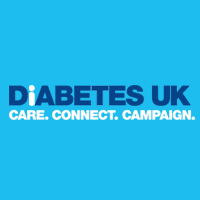Crispycrystal
Member
- Relationship to Diabetes
- Type 2
Todays news says that those people with type 1 are 3.5 times more at risk of dying if they become so ill they need to be hospitalised but those with type 2 are only twice as likely.

 www.diabetes.org.uk
www.diabetes.org.uk
Figures from elsewhere (Gov.uk website) show that in 2019 approx. 8.1% of the UK population have Type 2 diabetes and about 0.9% have Type 1.
So out of 23804 deaths in hospital, you would expect 8.1% (1928) would have Type 2 and 0.9% (214) would have type 1 if diabetes was not a factor (ie same ratio as the whole of the population)
The new data shows us that of the 23,804 deaths recorded in the study, 7,466 (31.3%) who died from coronavirus had type 2 diabetes, 7466 is 3.85 times bigger than the expected 1928 So Type 2 are 3.8 times more likely to die than those without diabetes.
365 (1.5%) had type 1 diabetes, 365 is 1.7 times bigger than the expected 214 So Type 1 are 1.7 times more likely to die than those without diabetes.
Has the article got it the wrong way around, or am I calculating it incorrectly?

NHSE statistics on coronavirus deaths in people with diabetes
A study from NHS England revealed that one in three people (33.2%) who have died in hospital in England following a diagnosis of coronavirus also had diabetes. We know this statistic raised a lot more questions than it did answers, and it may have left you feeling increasingly worried.
Figures from elsewhere (Gov.uk website) show that in 2019 approx. 8.1% of the UK population have Type 2 diabetes and about 0.9% have Type 1.
So out of 23804 deaths in hospital, you would expect 8.1% (1928) would have Type 2 and 0.9% (214) would have type 1 if diabetes was not a factor (ie same ratio as the whole of the population)
The new data shows us that of the 23,804 deaths recorded in the study, 7,466 (31.3%) who died from coronavirus had type 2 diabetes, 7466 is 3.85 times bigger than the expected 1928 So Type 2 are 3.8 times more likely to die than those without diabetes.
365 (1.5%) had type 1 diabetes, 365 is 1.7 times bigger than the expected 214 So Type 1 are 1.7 times more likely to die than those without diabetes.
Has the article got it the wrong way around, or am I calculating it incorrectly?

